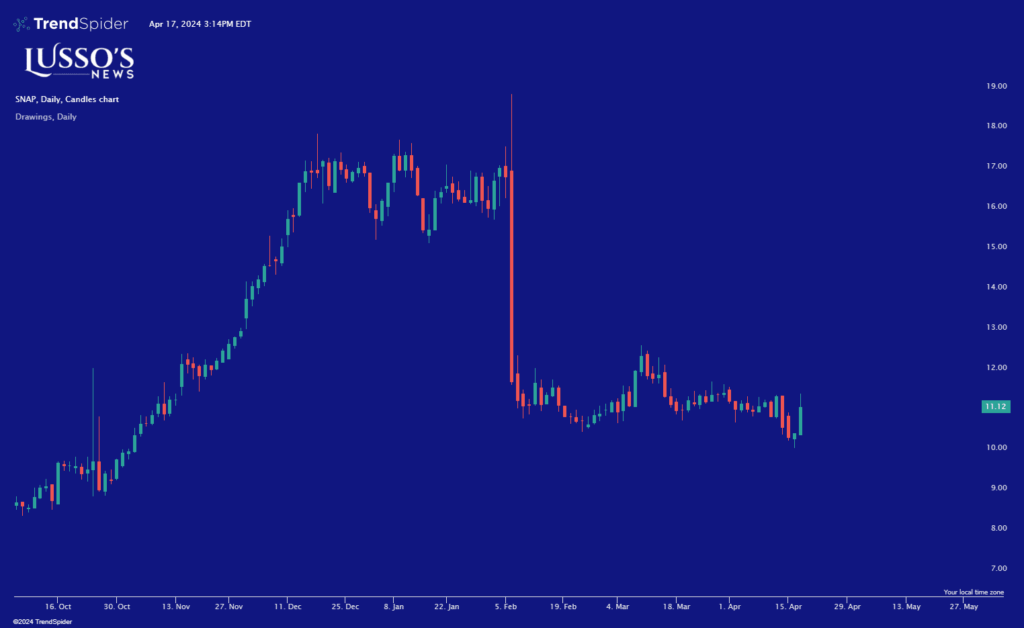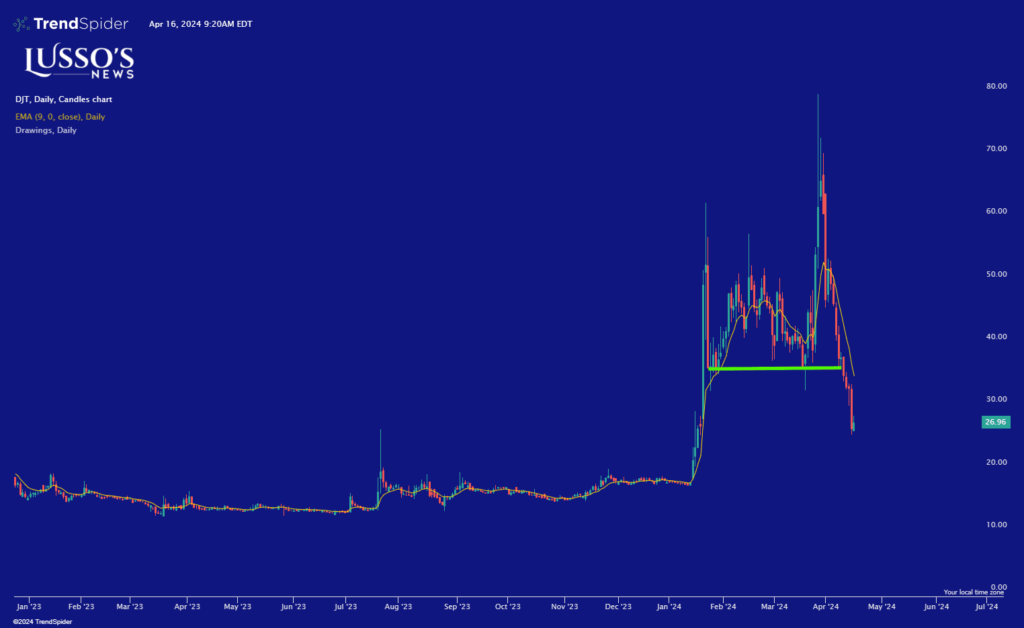Business
Opinion: Has Inflation Peaked? Why We Are Saying It Has

Inflation has been the topic of conversations since April of 2020. Most recently though, the CPI data has shown inflation numbers surge to numbers we haven’t seen in years. Commodities, especially grains and lumber have seen accelerated prices which have had an affect on prices in stores but, they have seen massive corrections as well since their rise.
Employment and Inflation
Companies have been competing to find workers as people have opted to stay home claiming the enhanced unemployment benefits which would have paid $500/week. In result, companies have raised wages for their employees which has resulted in raises their prices in stores to maintain margins.
For example, Chipotle [NYSE:CMG] has raised their prices in their stores about 4%. The company stated the raise in price was due to increased employee wages.
Why We See A Deflation Period
As the general public has their minds on inflation, we say other wise.
Enhanced Unemployment Expires
Enhanced unemployment benefits have or are set to expire in nearly 25 states earlier than the original expiration date in September. When these benefits expire, the workforce who is claiming unemployment claims will be making less money than they would make by going to work.
With a stronger work force and more people looking for jobs, it will result in companies not having to raise wages and offer hiring bonuses.
Less Free Time
When the workforce is more populated, people have less time on their hand. Less time will result in less money being spent which will result in less demand. The law of supply and demand states that with less demand, prices are lowered to create more demand. Lower prices will create decreased inflation.
Summer Frenzy, Summer Spending, Bye Bye Stimulus Checks
Savings accounts hit a high as citizens received multiple stimulus checks. With the economy and activities opening back up we expect a large number of those savings to be gone or greatly decreased with spending during summer activities.
Massive Covid-19 Case Rise, More Restrictions
Winter, which is known as a large Flu Season is approaching. Their is massive amount of uncertainties on this topic as no one knows what will happen.
Will Vaccines need another booster? Will the immunity of those that got the vaccine in the spring time expire by winter? Will a case surge cause a shut down? These are all questions that have to be asked.
What The Market Is Saying
The News lie but, Markets don’t.
Bonds

The 10 year treasury note futures are rising after trading in a range since March of 2021. A rise in rates could mean the market is anticipating rates being lower for the longer run which shows the theory for deflation is not just our opinion but the bond markets opinion as well.
US Dollar

The US Dollar has been rising at a rapid rate. It is nearing a potential breakout as well as the price is currently at a key trendline resistance level.
US 10 Year Treasury Yield

Today the 10 year yields broke down below a key prior support area. This is not something we see during a market that expects inflation to rise further in the near term.
Final Take
The FED released their minutes tomorrow at 2PM EST. I would expect the FED to be thrilled with what they are seeing out of the bond market as it doesn’t put urgent pressure on them to raise rates. The question lies, what will happen when they ease and stop buying assets.
The market is dictated by the tone of the FED at this current time and every signal, tone, word from the FED could lead to market direction.
Business
Mortgage Rates Hit 7.1%: Analyzing the Impact on the U.S. Housing Market

DO NOT MISS THIS FREE OPPORTUNITY!
ARE YOU A TRADER?
DO YOU WANT FREE STOCK PICKS?
CHECK THIS OUT….
Ready to elevate your trading game with the next big winner? Don’t miss out – join the savvy investors who are already benefiting from our Wall St veteran’s free SMS alerts. Act now! Sign up at https://slktxt.io/ZmRx or send ‘FREE’ to 844-722-9743 and be the first to get the insider scoop on what’s hot in the market
The U.S. housing market is experiencing significant pressure as mortgage rates have surged past the 7 percent mark for the first time this year. According to a recent report by Freddie Mac, the average rate on the 30-year mortgage, the most favored home loan across the nation, climbed to 7.1 percent this week, marking the highest level since last November. This spike poses a considerable challenge to millions of potential home buyers and could further slow down a market already showing signs of cooling.

Rising Rates and Their Ripple Effects
Last year, mortgage rates peaked at nearly 8 percent, a height unseen since 2000. This upward trend in rates began in 2021, significantly driven by Federal Reserve policies aimed at curbing inflation through higher benchmark interest rates. Despite a reduction in inflation rates, they remain above the Fed’s 2 percent target, leading to expectations that high borrowing costs may persist.
The immediate effect of these climbing rates is twofold. Firstly, potential home buyers face increased costs, making homeownership less accessible for many Americans. This economic strain is causing prospective buyers to deliberate intensely on whether to purchase now or delay in hopes of a rate decrease later in the year.
Secondly, existing homeowners, who secured their properties at lower interest rates, are reluctant to sell, fearing higher rates on a new mortgage. This hesitancy to sell is contributing to a decreased housing supply, inadvertently pushing home prices up despite fewer transactions.
Market Slowdown and Policy Responses
Data from the National Association of Realtors (NAR) underscores the market’s response to these economic pressures, with sales of existing homes dropping by 4.3 percent in March and 3.7 percent year-over-year. This downturn reflects broader economic frustrations and the daunting prospect of entering a market characterized by both high prices and high rates.
In a potentially mitigating development, the NAR recently agreed to settle litigation that would eliminate the standard real estate sales commission. Traditionally, sellers would pay a 5 to 6 percent commission, a cost typically passed on to buyers, inflating home prices. This change could, theoretically, reduce overall home purchasing costs.
Broader Economic Implications
The rising mortgage rates, coupled with the Fed’s indications of maintaining a high-interest rate environment, have pushed Treasury yields higher, influencing mortgage rates further. The 10-year Treasury yield has notably increased to about 4.6 percent since the start of the year.
As the market adjusts to these new economic realities, the overarching question remains: How many potential buyers can withstand further rate increases? Freddie Mac’s chief economist, Sam Khater, suggests that the future of the housing market is still very much uncertain, with potential buyers weighing the risks of higher future costs against the possibility of rate decreases.
Conclusion
The surge in mortgage rates above 7 percent represents more than just a numerical threshold; it is a significant barrier to entry for many Americans aspiring to homeownership. This development tests the resilience of the U.S. housing market and calls for close monitoring of future economic policies and market adaptations. As the landscape evolves, potential homebuyers and industry stakeholders alike must navigate these challenging waters with careful consideration and strategic planning.
Business
Potential Ban on TikTok: A Boon for Snapchat and Meta?

DO NOT MISS THIS FREE OPPORTUNITY!
ARE YOU A TRADER?
DO YOU WANT FREE STOCK PICKS?
CHECK THIS OUT….
Ready to elevate your trading game with the next big winner? Don’t miss out – join the savvy investors who are already benefiting from our Wall St veteran’s free SMS alerts. Act now! Sign up at https://slktxt.io/ZmRx or send ‘FREE’ to 844-722-9743 and be the first to get the insider scoop on what’s hot in the market
The U.S. House of Representatives’ recent move to potentially ban TikTok via legislation could have significant implications for the competitive landscape of social media, particularly benefiting companies like Snapchat and Meta (formerly Facebook). This legislative effort, part of a broader package for Israel and Ukraine, underscores growing concerns about TikTok’s Chinese ownership and its implications for national security.
Strategic Advantage for Competitors
Snapchat and Meta, two of the largest social media platforms in the United States, stand to gain from a TikTok ban. TikTok, with its 170 million U.S. users, has become a dominant force in social media, particularly among younger audiences who engage with its dynamic content ranging from dance videos to political discourse. A ban could leave a vast user base seeking alternative platforms, and Snapchat and Meta are well-positioned to absorb this migration.

1. User Engagement and Growth
Both Snapchat and Meta have been investing heavily in video and augmented reality—technologies at the heart of TikTok’s appeal. Snapchat’s innovative AR filters and Meta’s investment in Reels and virtual reality could see increased user engagement as TikTok users look for similar experiences elsewhere.
2. Advertising Revenue
A shift in user base would also likely lead to an increase in advertising revenue for Snapchat and Meta. Advertisers looking to capitalize on the highly engaged, predominantly younger audience that TikTok attracted would turn to these platforms, which offer robust ad-targeting systems and massive global reach.
3. Market Position and Shares
From a financial perspective, the potential TikTok ban could lead to a bullish outlook for stocks like Snapchat and Meta. Investors may see these companies as primary beneficiaries in the social media space, driving up share prices in anticipation of user growth and increased market share.
Challenges and Considerations
While the potential ban could offer a tactical advantage to companies like Snapchat and Meta, it also presents challenges. These companies would need to innovate continually to satisfy the diverse needs of former TikTok users. Moreover, the legislative move against TikTok raises broader concerns about internet freedom and regulation, which could eventually impact other social media platforms as well.
Ethical and Regulatory Landscape
The controversy surrounding TikTok has highlighted the complex interplay between technology, politics, and user privacy. As Snapchat and Meta potentially benefit from TikTok’s troubles, they must also navigate the ethical and regulatory challenges that arise from increased scrutiny on data practices and content moderation.
Conclusion
In conclusion, while the legislative push against TikTok could destabilize the current social media hierarchy, it also presents significant opportunities for companies like Snapchat and Meta to capitalize on a potential market void. However, these gains are not without challenges, requiring careful strategic planning and responsive innovation to harness effectively. Investors and market analysts will be watching closely as this situation develops, potentially reshaping the competitive dynamics of the social media industry.
Business
YUUUUGE, $DJT TMTG Launches Live TV Streaming Platform via Truth Social

DO NOT MISS THIS FREE OPPORTUNITY!
ARE YOU A TRADER?
DO YOU WANT FREE STOCK PICKS?
CHECK THIS OUT….
Ready to elevate your trading game with the next big winner? Don’t miss out – join the savvy investors who are already benefiting from our Wall St veteran’s free SMS alerts. Act now! Sign up at https://slktxt.io/ZmRx or send ‘FREE’ to 844-722-9743 and be the first to get the insider scoop on what’s hot in the market
Trump Media & Technology Group Corp. (NASDAQ:DJT), known as TMTG, has officially concluded the research and development phase for its innovative live TV streaming platform. This development marks a significant step for the operator of the social media platform, Truth Social. After six months of rigorous testing across its Web and iOS platforms, TMTG is now set to expand its content delivery network (CDN), enhancing the platform’s streaming capabilities.
Strategic Rollout in Phases
TMTG’s rollout of its streaming service is planned in three strategic phases, designed to broaden its reach and accessibility:
- Phase 1: Integration of the CDN with the Truth Social app, extending live TV streaming services to users on Android, iOS, and Web.
- Phase 2: The launch of standalone over-the-top (OTT) streaming apps for mobile devices and tablets, facilitating easier access to the platform’s content.
- Phase 3: Expansion to home television systems by introducing streaming apps compatible with various home TV setups.

Diverse and Inclusive Content Offering
The new streaming platform is set to host a variety of content, including live TV, news networks, religious channels, and family-friendly programming such as films and documentaries. TMTG aims to serve as a sanctuary for content and creators at risk of cancellation or suppression on other platforms, promising a safe haven for free expression and diverse viewpoints.
A Commitment to High-Quality Streaming and Free Speech
Devin Nunes, CEO of TMTG, expressed his enthusiasm for the project, highlighting the platform’s commitment to providing a permanent home for high-quality news and entertainment. “We want to let these creators know they’ll soon have a guaranteed platform where they won’t be cancelled,” said Nunes.
The CDN developed by TMTG is engineered to be user-friendly, cost-effective, and independent of Big Tech influences. It incorporates advanced technology designed to optimize video streaming speed, performance, and security while minimizing disruptions. This initiative is expected to substantially enhance the user experience on Truth Social, reinforcing the platform’s mission of promoting free speech and serving its robust community of users and supporters.
Conclusion: A Strategic Expansion by TMTG
As TMTG transitions into the next phase of its development with the rollout of its live TV streaming platform, the company is poised to make significant impacts in the media and technology landscape. This expansion not only diversifies TMTG’s offerings but also strengthens its position as a champion of free speech and alternative media. The strategic development of its CDN and phased rollout plan demonstrates TMTG’s commitment to growth and innovation, potentially setting new standards in the streaming content arena.
-

 Markets3 months ago
Markets3 months agoUnderstanding Viking Therapeutics’ Position in the Biopharma Sector: A Beginner’s Guide
-

 Markets3 months ago
Markets3 months agoThe AI Revolution: How Super Micro Computer (SMCI) Skyrocketed in the Tech Rally
-

 Trading2 months ago
Trading2 months ago3 Must-Watch AI Stocks in 2024: Unveiling ShiftPixy, C3.ai, and CXApp’s Market Potential
-

 Markets3 months ago
Markets3 months agoMastering the Market: A Guide to the Fundamentals of Value Investing
-

 Lusso's Exclusives2 months ago
Lusso's Exclusives2 months agoWall Street Veteran Owns A Crap Ton Of Monday.com Stock [NASDAQ:MNDY]
-

 Business3 months ago
Business3 months agoDeciphering HSBC Holdings plc’s Fiscal Landscape: An In-depth Analysis of 2023’s Outcomes
-

 Markets3 months ago
Markets3 months agoPlus500 Ltd’s Financial Overview: A Glimpse into 2023’s Performance
-

 Markets3 weeks ago
Markets3 weeks agoBoeing’s Proactive Measures Ahead of Whistleblower Hearing
-

 Markets2 months ago
Markets2 months ago[BREAKING NEWS] ShiftPixy (PIXY): Poised for Explosive Growth with Strategic Acquisitions and $100 Million Financing
-

 Lusso's Exclusives3 months ago
Lusso's Exclusives3 months agoTop Stocks to Watch Tomorrow: LQR, NVDA, SMCI, and HOLO
-

 Business3 months ago
Business3 months agoTesla’s Board Dynamics: The Drive for Independence and a Potential Delaware Exit

























Pingback: U.S. Futures Market Trading Lower As Traders Spooked By Strong USD | Lusso's News